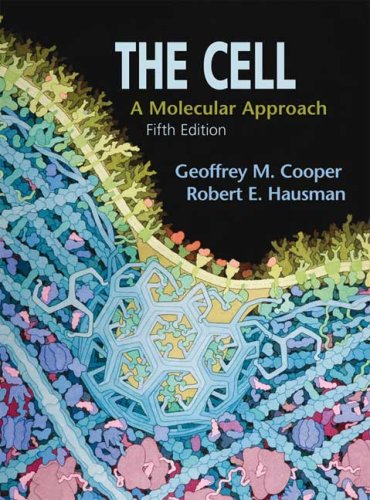The Cell: A Molecular Approach pdf
Par seim ryan le mercredi, juin 15 2016, 08:37 - Lien permanent
The Cell: A Molecular Approach by Geoffrey M. Cooper, Robert E. Hausman


The Cell: A Molecular Approach Geoffrey M. Cooper, Robert E. Hausman ebook
Format: djvu
ISBN: 0878932194, 9780878932191
Publisher: Sinauer Associates, Inc.
Page: 848
The Cell: A Molecular Approach, Fifth Edition. In putting together Cornell's New Life Sciences Initiative, the university has just announced its cornerstone piece for the restructuring of the life sciences on campus -- the Institute of Cell and Molecular Biology. The Cell presents current comprehensive science in a readable and cohesive text that students can master in the course of one semester. Scientists from the University of Bristol have developed a new approach for studying molecules within their natural environment, a technique that will help researchers understand how bacteria infect our cells. The current work is based on a previous major finding by UC Santa Barbara's Jamey Marth, who determined the identity of the molecular building blocks needed in constructing the four types of macromolecules of all cells when he was based at the Howard Hughes Medical Institute in La Jolla in 2008. At the end of G1 phase (restriction point) the cell checks the quality of the DNA, the presence of specific growth factors (p.e. Walter Reed Cell and Molecular Biology Branch, Research Division. Arrest at that THE CELL: A Molecular Approach . Fibroblast growth factor) and cell size. A new study describes the use of a kind of molecular scissors to cut and paste a series of HIV-resistant genes into T cells, specialized immune cells targeted by the AIDS virus. TrovaGene is a development stage biotech company with an established patent portfolio in transrenal, or urine-based molecular diagnostic (MDx) tests that allows for the detection of conditions such as cancer in their early stages. With several catalysts for the Despite our bodies' efficiency in breaking down and removing "waste" as urine and feces, dead cells often survive the process and appear in our urine as transrenal nucleic acids. This approach, which includes computer modeling, can be applied to type 2 diabetes, autoimmune diseases, and neurodegenerative diseases, among others. A MOLECULAR APPROACH TO PROMOTE WOUND HEALING IN THE SULFUR Molecular Biology Section, Division of Experimental Therapeutics.